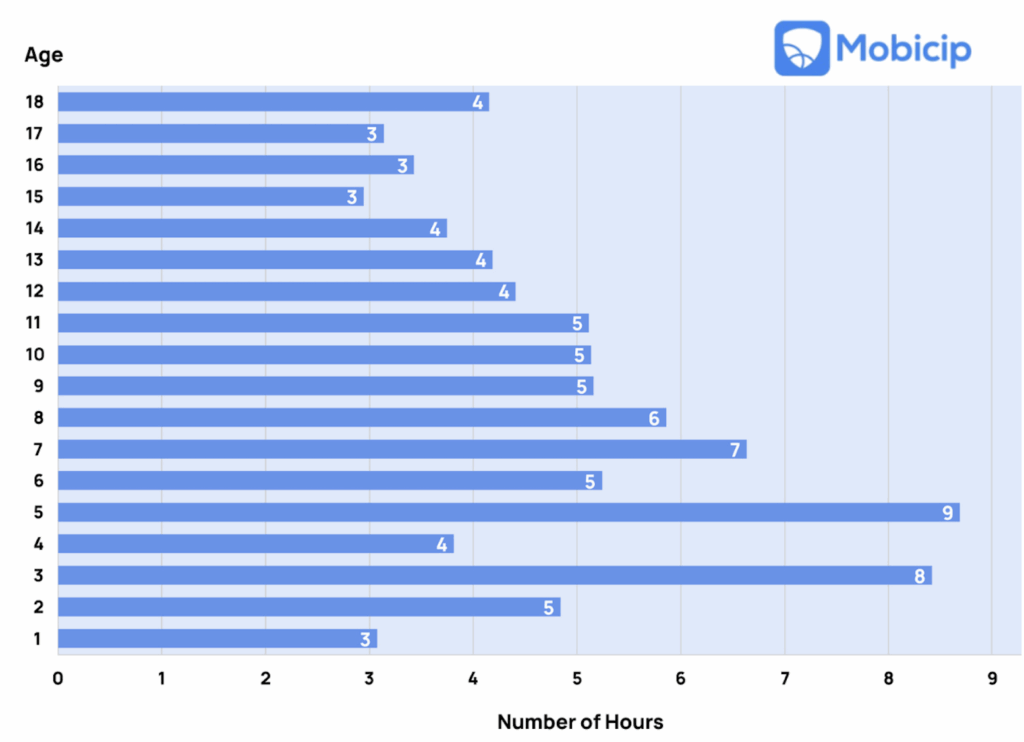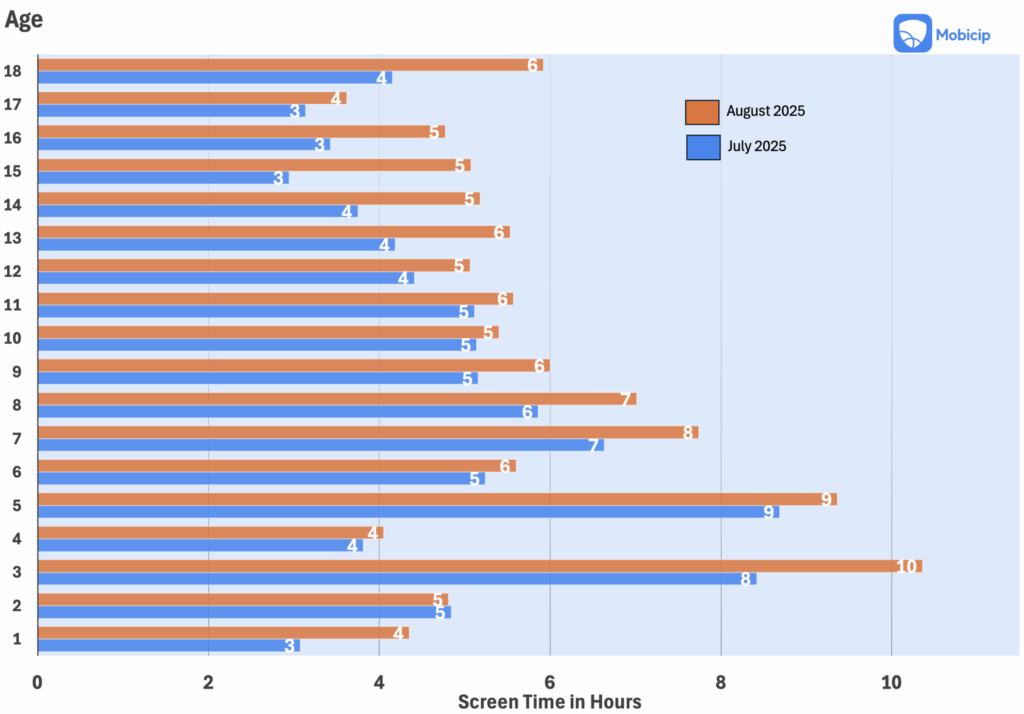Back to School, Back to Screens? Get Mobicip Before the Real Homework Begins
As the school year begins, so does a surge in screen time. From online homework and digital textbooks to class group chats and educational apps, screens are now essential tools in your child’s learning journey—but they also open the door to potential digital harm. This article will guide you in spotting red flags, setting up healthy digital routines, and using tools like Mobicip to stay informed without being intrusive. Whether your child is in elementary or high school, we’ll discuss practical ways to manage the hidden challenges of school-time screen use and help your child stay safe, focused, and balanced.
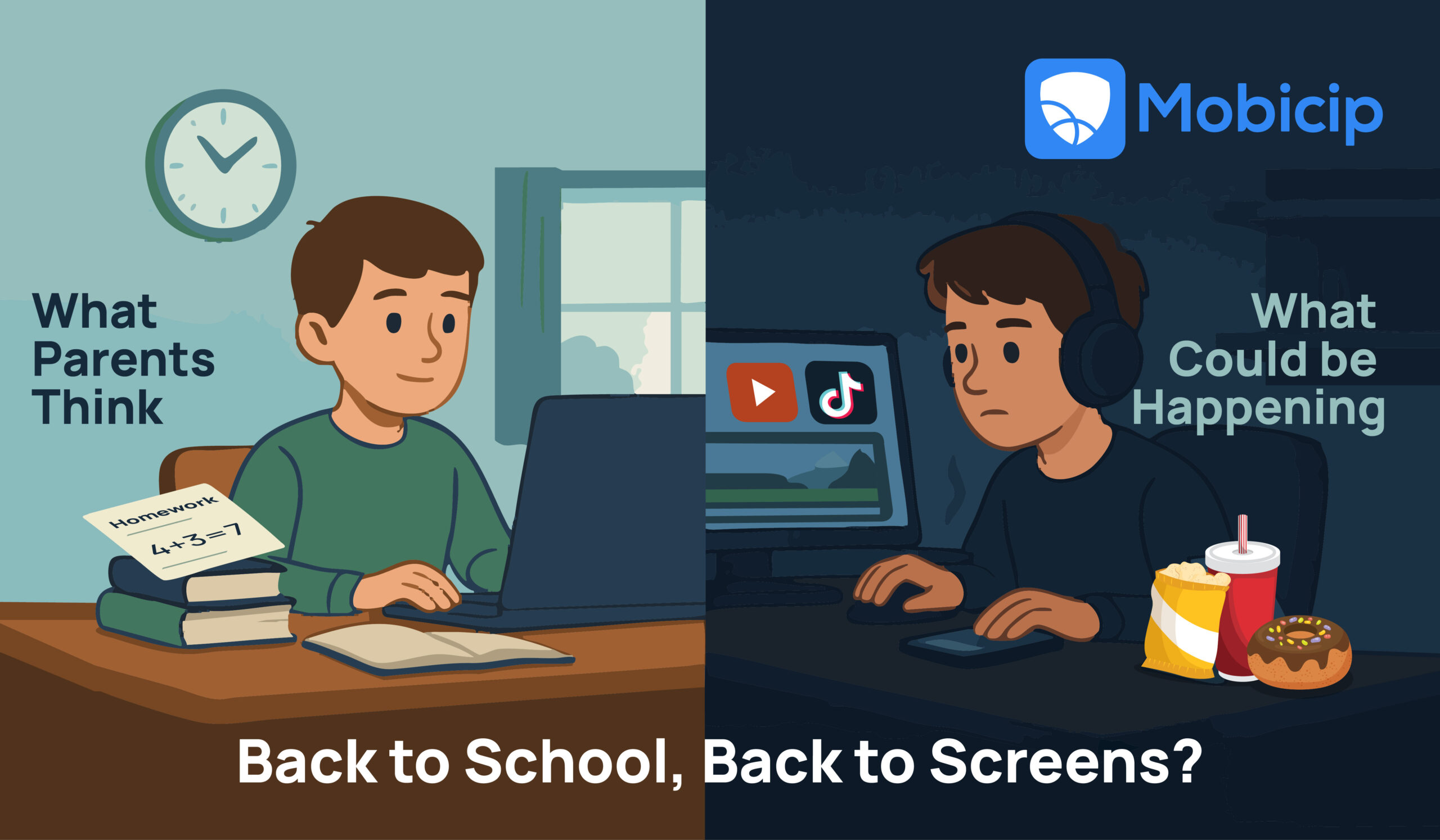
Back to school doesn’t have to mean back to screen-time battles. A little guidance—and the right digital tools—can make all the difference.
The Hidden Screen Time Surge During School Season
Think school cuts down on your child’s screen time? Think again. While the classroom may seem like a phone-free zone, the reality is far more complicated. Screens are everywhere—used for assignments, research, and even class communication. But they’re also the gateway to major distractions, and kids are finding ways to stay connected even during school hours.
A Common Sense Media study that tracked the smartphone data of 200 students aged 11–17 reveals just how widespread the issue is:
- 97% of students used their phones during the school day, regardless of school policies.
- Daily in-school screen time ranged from less than 1 minute to 6.5 hours, with a median of 43 minutes.
- 59% used their phones on school nights, with a median of 20 minutes of screen time after hours.
- On average, students picked up their phones 51 times per day, with some reaching as many as 498 pickups.
With hybrid learning models and homework increasingly relying on digital platforms, screens are now essential—but also harder to manage. What starts as a genuine search for school material can quickly lead to TikTok rabbit holes or quick gaming breaks between assignments.
It’s not just about limiting screens anymore—it’s about guiding their use. Parents need smart strategies and digital tools to ensure screens remain a help, not a hindrance.
Why Screentime Matters: Academic, Emotional, and Sleep Impact
Screens aren’t just a distraction—they can quietly shape your child’s academic performance, emotional resilience, and even how well they sleep. During the school year, when structure and routines matter most, the side effects of unchecked screen time become even more significant. Here’s what the research says:
Academic Focus: Distraction Hurts Grades
A recent study from India analyzed the impact of screen time on academic performance among 301 middle school students. Here’s what they found:
- Children with more than 3 hours of daily screen time averaged 62.1% in school grades.
- In contrast, those who did not use screen media at all had a much higher average of 88.4%.
- The trend was consistent across early, middle, and late adolescence, suggesting that increased screen time correlates with lower academic achievement.
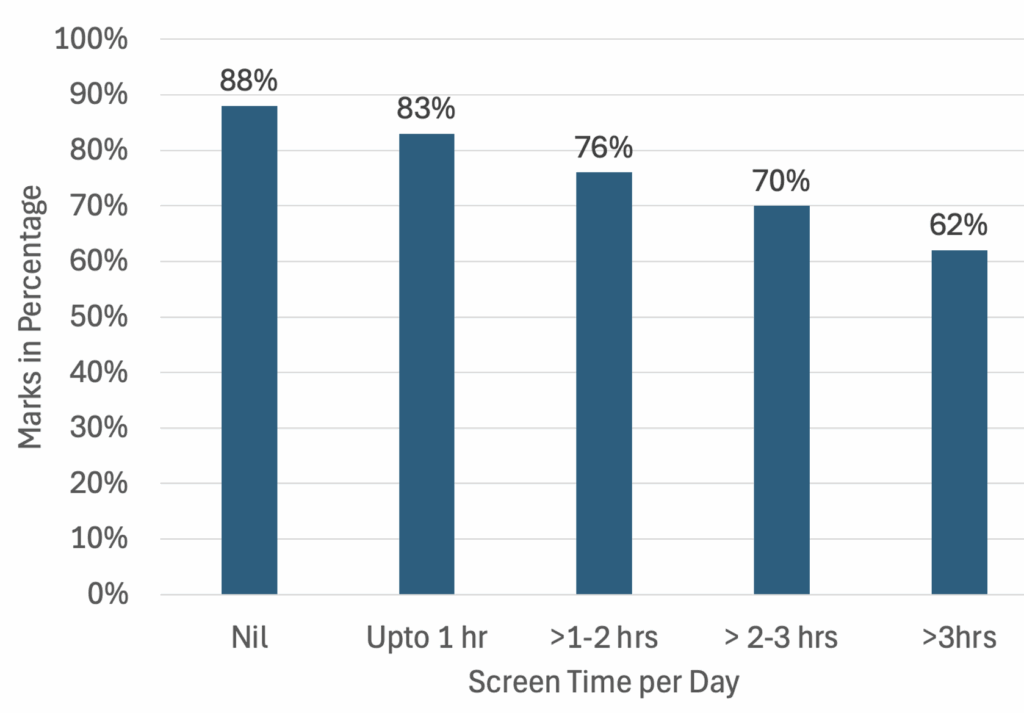
Source: http://caspianjp.ir/article-1-198-en.html
Mental Health: Social Pressure Doesn’t Stop After School
An international team of researchers analyzed 117 studies involving over 292,000 children worldwide, with findings published in Psychological Bulletin (APA):
- Excessive screen use was linked to socioemotional problems—like anxiety, depression, and low self-esteem.
- Children struggling emotionally were also more likely to turn to screens as a coping mechanism, especially for gaming.
- Positive screen experiences (like co-viewing with parents) had fewer negative effects, suggesting that how kids use screens matters as much as how long.
- The study urges parents to focus on screen content, context, and connection—not just time limits.
Sleep Disruption: Night Scroll Takes a Toll
Sleep quality is one of the first casualties of unchecked screen time, and poor sleep affects everything from emotional well-being to learning:
- Research shows a strong link between poor sleep and symptoms of anxiety and depression in children.
- Screen-related sleep disruptions—like doomscrolling or late-night gaming—can reduce REM sleep and increase cognitive fatigue and irritability.
- Children with anxiety often experience hyperarousal at bedtime, making it difficult to fall or stay asleep, further fueling mental health issues in a vicious cycle.
(Source: https://pmc.ncbi.nlm.nih.gov/articles/PMC11638915/)
Meet Mobicip: Your Digital Co-Parent
In today’s world where the digital device is used for both work and play, simply telling kids to “focus” or “log off” often isn’t enough. That’s where Mobicip steps in—not as a strict enforcer, but as a digital co-parent that helps families build healthier screen habits together.
Mobicip isn’t just about blocking apps or limiting screen time. It’s designed to work with families, offering tools that help parents stay in the loop without hovering. Want to understand how much time your child is spending on schoolwork versus YouTube or TikTok? Mobicip’s easy-to-read reports give you a clear picture. Need to schedule screen-free hours for dinner or bedtime? You can do that too—with just a few taps.
3 Ways Mobicip Helps During the School Year
Screen Time Schedules
Create daily routines by setting clear time limits for study, play, and rest. With customizable schedules, you can ensure devices are off during school hours, family meals, or bedtime—without constant reminders.
App & Website Filtering
Block distracting apps and websites like games or social media during homework time. Filters are age-appropriate and adjustable, so kids stay focused when it matters most.
Activity Reports
Get a bird’s-eye view of your child’s digital habits. From app usage to browsing trends, Mobicip’s reports help you understand when it’s time to step in—and when it’s time to celebrate progress.
Instead of constant nagging or arguments, Mobicip opens up conversations. It helps you guide—not guard—your child’s online experience, so they can learn to balance digital life with real-life responsibilities. Think of it as tech-savvy parenting, made simpler.
Back-to-School Digital Checklist
Here’s a simple checklist to help your child start the school year with healthy digital habits. Print it out. Stick it on the fridge. Or better yet, go through it together.
- Set screen time limits for school days and weekends
- Filter distracting content during homework hours
- Schedule device-free time before bed to improve sleep
- Talk regularly with your child about online habits and challenges
- Review activity reports to stay informed (not intrusive!)
- Update parental controls across all devices
- Model healthy screen use as a family
And most importantly, Install Mobicip to simplify and support all of the above
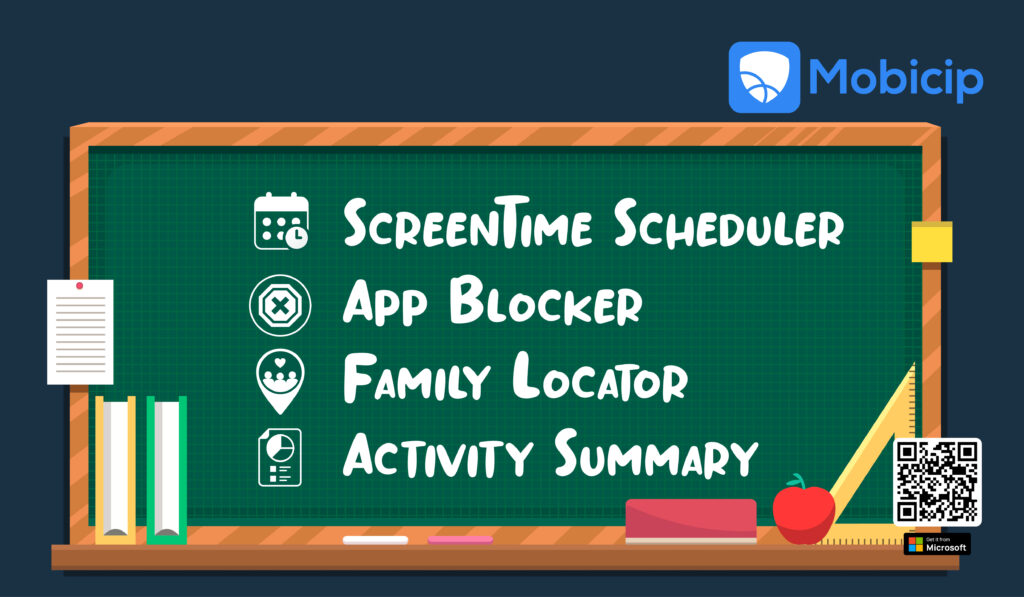
Conclusion – The Homework Isn’t Just Theirs
Today, back-to-school prep isn’t just about new backpacks and sharpened pencils—it’s about rethinking how we parent in a world where learning, entertainment, and distraction all live on the same screen. Our children are growing up in an environment we never experienced ourselves, where the boundaries between schoolwork and scrolling blur by the hour.
We can’t turn back the clock, but we can show up differently. By engaging early, setting clear expectations, and using tools like Mobicip, we don’t just protect our kids—we empower them to make smarter choices long after the school bell rings.
Because, in today’s world, the real homework is raising digitally strong kids.
Related Video
Video Vault: Manage Screen Time to Improve Focus with Mobicip
Video Vault: Simple Screen Habits for Back-to-School Success




